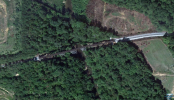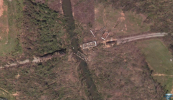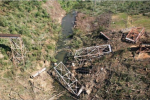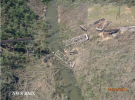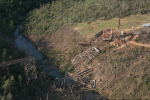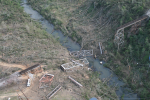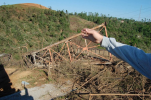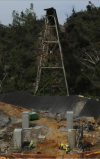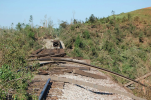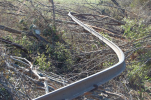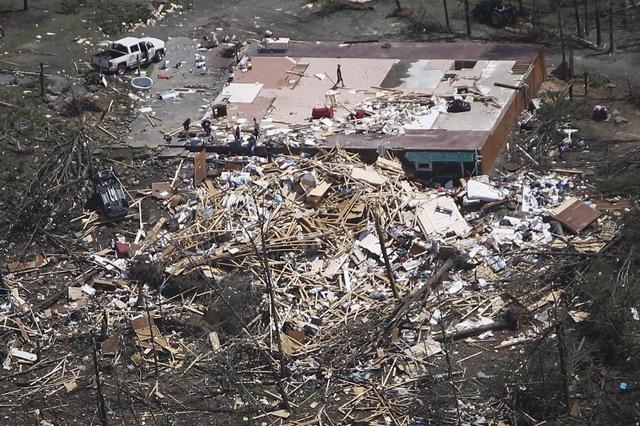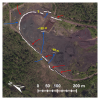There might be enough info here to make a calculation on the Tuscaloosa Railroad Bridge. Either way, I found some really detailed pics of it.
The bridge was 564 feet long and rose 120 feet above the streambed.
The one that needs looked as weighed 34 tons and was rotated and thrown approximately 100 feet straight up hill. I believe it's the shortest one on the far right.
Here's the before and after
View attachment 46985
View attachment 46986
Here's as many angles as I can get of it.
View attachment 46987
View attachment 46988
View attachment 46989
View attachment 46990
View attachment 46991
View attachment 46994
Based on these photos it looks like the trestle was probably 40 feet tall. Assuming the 4 outer steel columns are a foot wide that'd make the starting surface area about 640 square feet. Not sure how to calculate all the inner beams and cross sections. Probably can just do a rough estimate and doesn't have to be too precise. I wonder what forces were required to loft it that far without even considering the concrete pilings it was anchored to.
Another interesting tidbit about this area:
"More than 600 feet of steel track was lost, much of which was left warped
and trailing into the forest. Kevin Laws, the Science and Operations Officer
at the NWS in Birmingham, stated in episode 797 of the Weather Brains
podcast that 'I've never seen railroad tracks that were bent into big U-
shapes. They were actually touching end to end ... the train ties, the wood
pieces that go under the track ... they were being dug up out of the ground
and slung fifteen miles away, that's just incredible.' "
View attachment 46992
View attachment 46993


